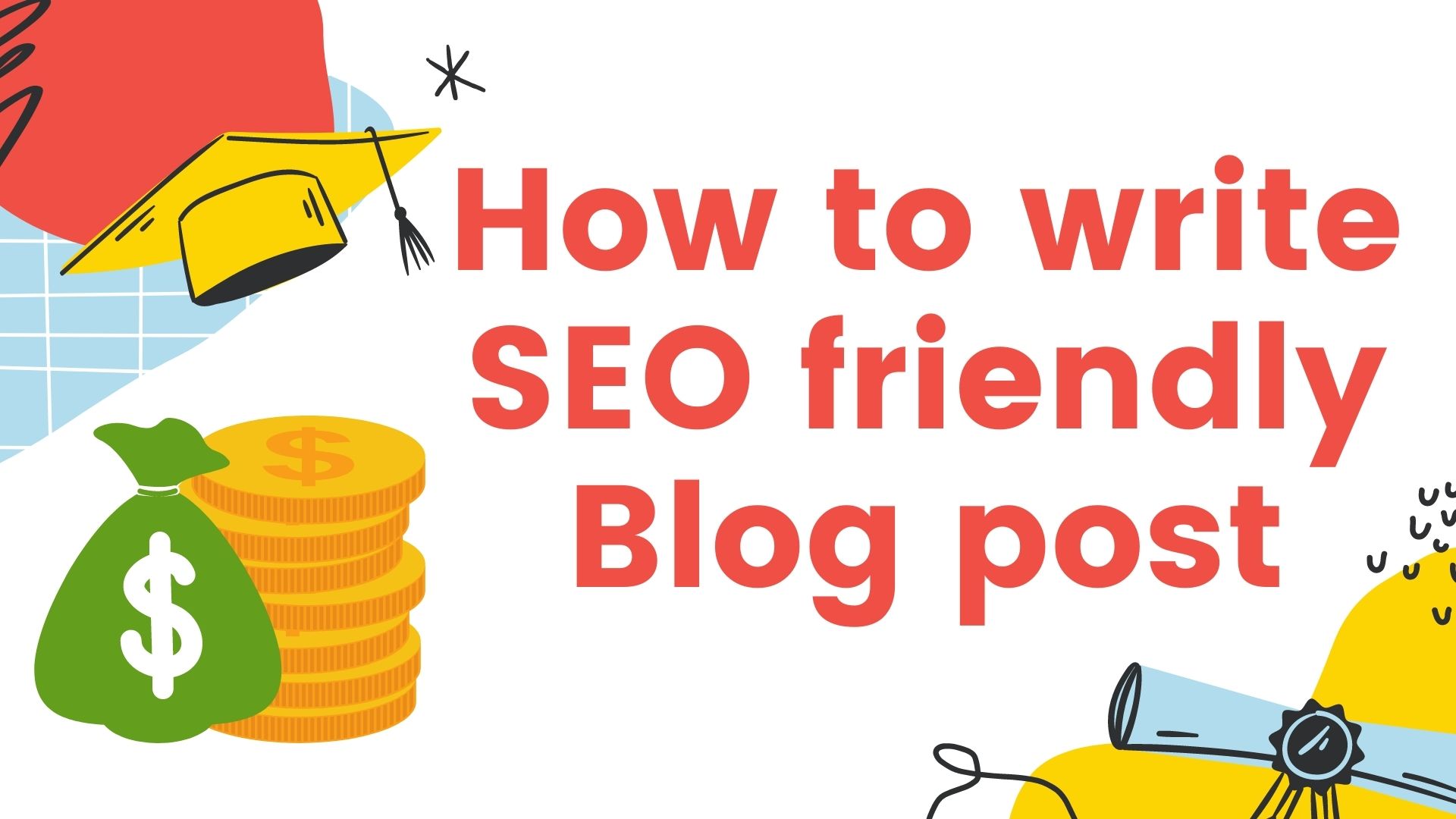How to write SEO-friendly blog posts?
You want to start a successful
blog post. But you are not sure how to start, that is about how to write SEO (Search
Engine Optimization)-friendly blog posts. Well, this article will take you
through some techniques you could follow to start a successful SEO-friendly
blog post.
Firstly, if you would like to
improve your ranking then you should improve your writing skills. Think smartly
choose and write topics that can keep readers engaged. Remember, you have to
implement the Search Engine Optimization rules. And remember it is one of the digital marketing services.
If your article has content of
great quality, there are more chances for them to be ranked high on Google search.
1. Find your Niche:
- Research your competition
- Find out the benefits of your
niche
- Test your idea.
2. Generate a structure for your post:
To write SEO friendly blog post,
you need to establish a clear structure. Every post should have:
- An
introduction (to introduce the topic);
- A
body (to convey the main message);
- A
conclusion (to sum up ideas shared)
Break down your blog posts into
these three sections and then convey the idea you want your readers to
understand. Each section can be a minimum of 400-500 words on the blog post.
3. Maintain headings and subheadings :
Headings and subheadings play an
important role in the content. Headings attract an audience to spend more time
reading the article. Do not type the heading in uppercase. Headings help readers to understand what the
topic is about.
A subheading comes under a
heading line. It expands that what is saying in the heading. These are used
mainly for text readability purposes.
4. Keep your paragraphs short :
You can use short paragraphs of
about 100 words each because sometimes the attention of readers wanes with
lengthy paragraphs. Don't start every sentence as a new line. See to it that
every paragraph must have its own subject.
5. Keep the language simple :
Simple words help people to
understand the relationship between sentences and paragraphs. choose simple
words, using plain and transparent language that can help your audience read
and understand your blog. Most of the popular blogs have language that a larger
population of audiences can read and understand.
6. Use relevant keywords without keyword stuffing :
Stuffing keywords means you have
used too many keywords related to the content of your blog. This will make your
blog less attractive to read and that can impact your ranking too. Google wants
you to write content that users liking. So don't focus on keyword stuffing and
use related keywords. Keywords stuffing is outdated and has no value in ranking
today.
7. Enhance the length of your article :
Make sure your blog post has a
minimum of 300 words and a maximum of 1500 words. Google likes lengthy articles
but if your article is too long it can turn users away. If you are a skilled
writer then you can write lengthy articles. A lot of your visitors may read
lengthy articles as well. Make sure the end of your blog post is SEO-friendly.
My suggestion is to focus on the "key phrase" for your post that will
help locate the article on search engines.
8. Link structure :
The link structure is also
important for ranking on Google. Don't forget to link from the current page to
already written content on the same topic. Linking to other content with the
same subject is better for your readers, as they may be interested to read
related posts as well. Therefore, links help readers to navigate your site.
There are two kinds of links - one is an internal link and another one is an
external link. It helps readers to understand the relationships between
different content on your posts.
9. Build on content regularly :
Adding new blog posts regularly
is a sign to Google that your site is alive. If your site is not active this
might negatively affect your ranking. But do not post for the sake of posting
something. Ensure that your post has good quality content.
10. Maintain SEO traffic :
SEO improves user experience and
website usability. Users believe in search engines. With the keywords the user
uses for search, the engine prioritizes blogs and articles based on the
relevance of keywords. It is very useful to increase your website traffic.
Half of the traffic is by
clicking on links and searching for a particular keyword. If your webpage is
ranked on the first page then sure you get more traffic through by click and
visit your article.
11. Give Backlinks :
When we give links from one page
to another it is known as Backlinks. When someone link to your website, you
have backlinks. When you link to another website, they will receive your
backlink. Backlinks to your website can generate traffic, build trust, and
improve your brand's search engine rankings.
Here are some additional tips for
Smart Ways to Build Backlinks to Your Website/Blog
a. Boost your content
b. Realize the advantage of guest
articles.
c. Keep track of your
competitors.
d. Build some internal links.
e. Backlinks through content
creation.
This goes to prove that Backlinks
are important for SEO performance. They are the base to get ranking on the
Google page.
Conclusion:
I hope this article has helped
you understand the steps you should follow to make a successful SEO-friendly blog
post and the techniques you have to implement in your blog post to get a high
ranking on Google. Remember the success mantra- Quality content leads to more
links, tweets, shares, and returning visitors to your website/Blog.







No comments:
Post a Comment